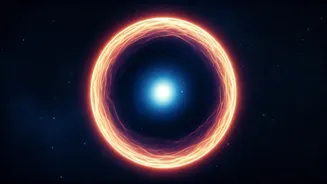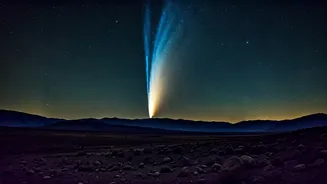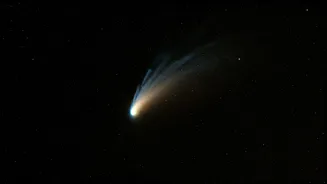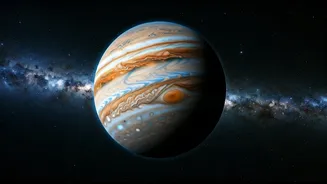The Planet Nine Puzzle
The quest for 'Planet Nine' has captivated astronomers for years, driven by anomalous orbital patterns observed within the Kuiper Belt. These unusual orbits
of icy bodies suggested an unseen gravitational influence. Researchers have theorized that a massive planet, significantly farther out than Neptune, could be the cause of these strange orbital behaviors. This hypothetical planet, often referred to as 'Planet Nine,' is believed to be several times the mass of Earth, orbiting the Sun at an extreme distance. The search for this hidden celestial body involves analyzing extensive datasets and employing sophisticated simulations to detect its presence, which has become a focal point of astronomical research, potentially reshaping our understanding of the solar system's formation and evolution.
Orbital Anomalies Explained
The evidence supporting the existence of Planet Nine primarily comes from the peculiar arrangement of objects in the Kuiper Belt. Many of these icy objects, located beyond Neptune, exhibit highly elongated and aligned orbits. These orbits deviate significantly from the expected patterns predicted by current solar system models. Astronomers have calculated that a massive, unseen planet could exert the gravitational force needed to sculpt these unusual orbits. The gravitational influence of this hypothetical planet would cause these Kuiper Belt objects to cluster in specific configurations, providing a crucial piece of the puzzle. This understanding led to an intense search using advanced telescopes and data analysis techniques. The pursuit aims to identify the unseen planet and validate the theoretical model.
Hints from Observations
Recent observational data and studies have provided further evidence that supports the Planet Nine hypothesis. Using sophisticated computer simulations, astronomers have modeled the gravitational interactions between the hypothetical planet and the known objects in the outer solar system. These simulations have shown that a planet of specific mass and orbital characteristics could reproduce the observed anomalies, offering strong support for Planet Nine's existence. Moreover, researchers have looked at old data, from satellites, potentially revealing subtle hints of the planet's gravitational effects. These are preliminary but encouraging findings, which could guide the search for this elusive celestial body. The use of advanced telescopes and innovative data analysis is crucial to uncovering more direct evidence and confirming the planet's presence.
Implications of Discovery
The discovery of Planet Nine would hold profound implications for our understanding of the solar system's formation and evolution. The planet's presence could challenge existing models of planetary formation, which struggle to account for its inferred mass and location. It could force scientists to reconsider how the outer planets, including Neptune and Uranus, were formed and migrated to their current positions. A discovery of this magnitude would rewrite textbooks. Planet Nine's characteristics would offer insights into the early solar system's environment. The planet's existence might shed light on the distribution of material in the outer solar system and the processes that shaped the icy bodies. It could help explain how the solar system evolved from a swirling disk of gas and dust to its present configuration.
Search and Future Prospects
The search for Planet Nine is ongoing. Astronomers are using advanced telescopes such as the Subaru Telescope in Hawaii and the Vera C. Rubin Observatory, currently under construction in Chile, to survey the outer solar system. These telescopes are designed to detect faint objects and provide high-resolution images, potentially allowing astronomers to locate the hidden planet. Advanced data analysis and sophisticated computer simulations are also crucial. Scientists are refining their search strategies and analyzing existing datasets for new clues. The possibility of finding Planet Nine has captured the imagination of the scientific community and the public alike. The discovery would be a significant milestone, opening new frontiers in the exploration of our solar system.











